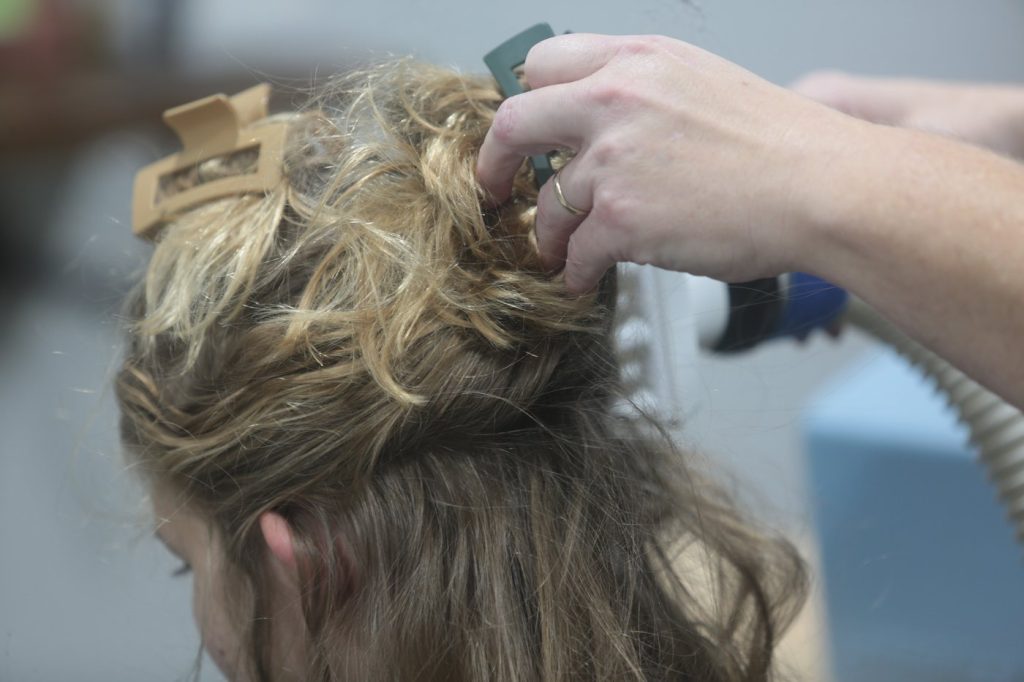As children return to school, parents are sharing concerns about a potential nuisance: head lice. The Centers for Disease Control and Prevention (CDC) indicates that these blood-sucking parasites are most prevalent among preschool and elementary-aged children in the U.S.
Since the beginning of the school year in mid-August, public interest in head lice has surged, with many seeking information on prevention and treatment options. The CDC estimates that there are up to 12 million head lice infestations annually in the U.S., primarily affecting children aged 3 to 11.
Despite the commonality of lice infestations, a significant amount of misinformation surrounds them. Experts have provided answers to frequently asked questions regarding detection, treatment, management, and school policies regarding lice.
How do you know if your child has lice?
Head lice are small parasitic insects that can be difficult to detect. The primary symptom of an infestation is intense itching of the scalp, according to Dr. Danilo C. Del Campo, a dermatologist based in Chicago. The eggs, referred to as nits, vary in color from yellow to brown or tan and resemble tiny seeds. Once hatched, they appear clear. It is also suggested that infestations can be misidentified as dandruff or seborrheic dermatitis.
Becky Boudreau, a head lice technician in New Hampshire, notes that lice are more active at night, which may lead to increased scratching or sleeping difficulties for children. Parents may find it harder to recognize an infestation in children who exhibit a higher tolerance for pain or are less sensitive to insect bites. Importantly, there is no set threshold of lice that defines an infestation; a child either has lice or does not.
What are my treatment options?
Various treatments exist for eliminating head lice, which include both medications and the services of specialists who manually remove lice and their eggs. The choice of treatment often depends on the child’s age, access to clinics, treatment costs, and the severity of the infestation. Many parents opt for professional “nit pickers” to manage the treatment, finding it a more manageable option than dealing with lice themselves.
Dr. Krista Lauer, the national medical director for Lice Clinics of America, describes their clinics as utilizing an FDA-cleared medical device that combines airflow temperature, speed, and direction to effectively kill lice and their eggs. Treatment efficiency largely relies on applying the device in a specific pattern, followed by a thorough comb-out of the dead lice.
Boudreau employs a combination of shampoo, olive oil, and a specialized comb for the removal process. She highlights that many over-the-counter lice treatment kits are "designed to fail,” often necessitating multiple applications. The American Academy of Dermatology Association advises that retreatment is necessary for any non-prescription product used, as no single treatment can kill all lice and their eggs immediately.
Dr. Del Campo emphasizes that while FDA-approved treatments are generally effective, dermatologists may hesitate to recommend lice combs and other procedural treatments due to time consumption and variances across hair types. He recommends effective over-the-counter medications that require no prescription as a first step for parents. Home remedies, such as using oils or mayonnaise to suffocate lice, lack scientific support for their efficacy.
What can you do to manage an infestation?
Adult lice can survive on a host's head for about 30 days but will die within two days away from their feeding source. Louse eggs can take up to nine days to hatch, followed by another seven days to mature into adults. Transmission primarily occurs through direct head-to-head contact, as lice cannot jump or fly.
The CDC recommends washing and drying clothing, avoiding infected hair products, and cleaning areas where infested individuals were present. Although it is less likely for lice to spread through shared items, thorough cleaning is suggested.
Can my child go to school with lice?
The CDC states that children with head lice do not need to be sent home early from school; they can return to class after beginning treatment. Experts maintain that while treatments may eliminate crawling lice, some nits could remain. Dr. Del Campo advocates for parents to challenge outdated school policies that might require children to miss significant school time due to lice infestations. He emphasizes that lice are not harmful and do not spread diseases.
Misconceptions about lice can perpetuate stigma and discomfort among affected families, as many carry traumatic memories from their own childhood experiences with lice due to fewer effective treatments at the time. Dr. Del Campo asserts that modern methods and over-the-counter solutions offer a different reality regarding lice today.










